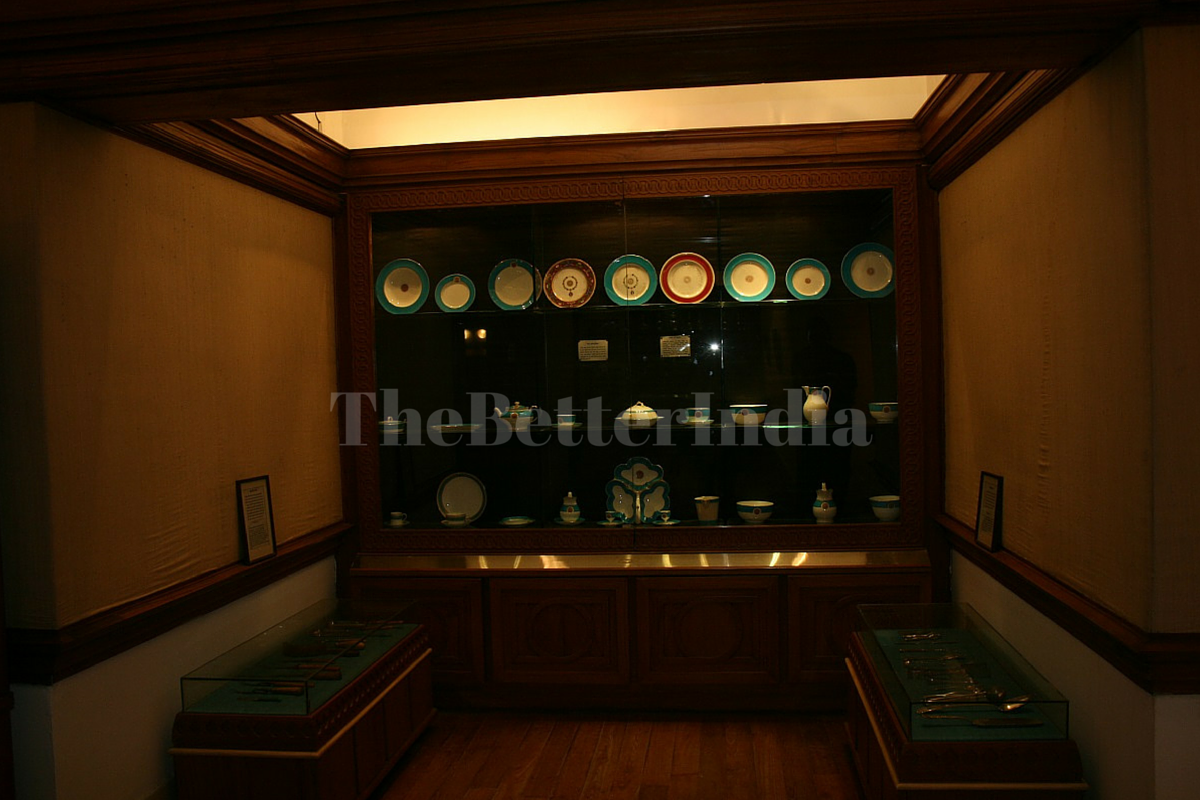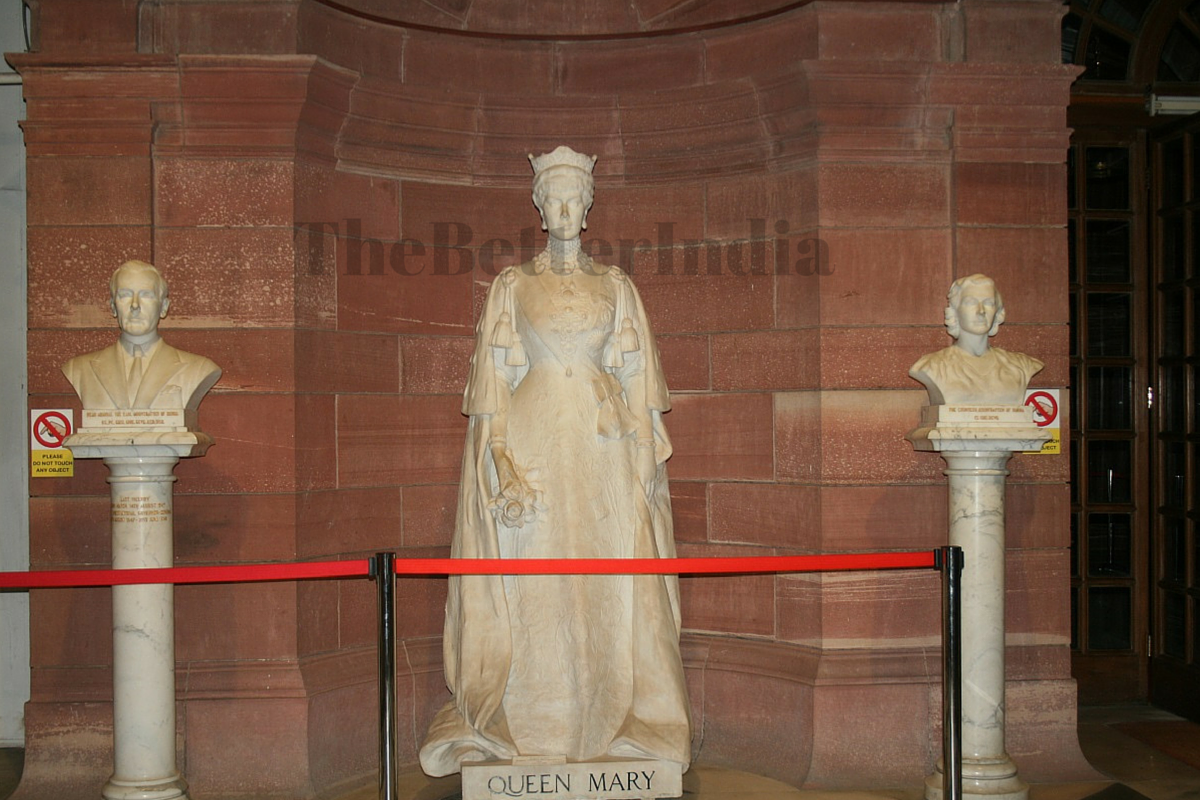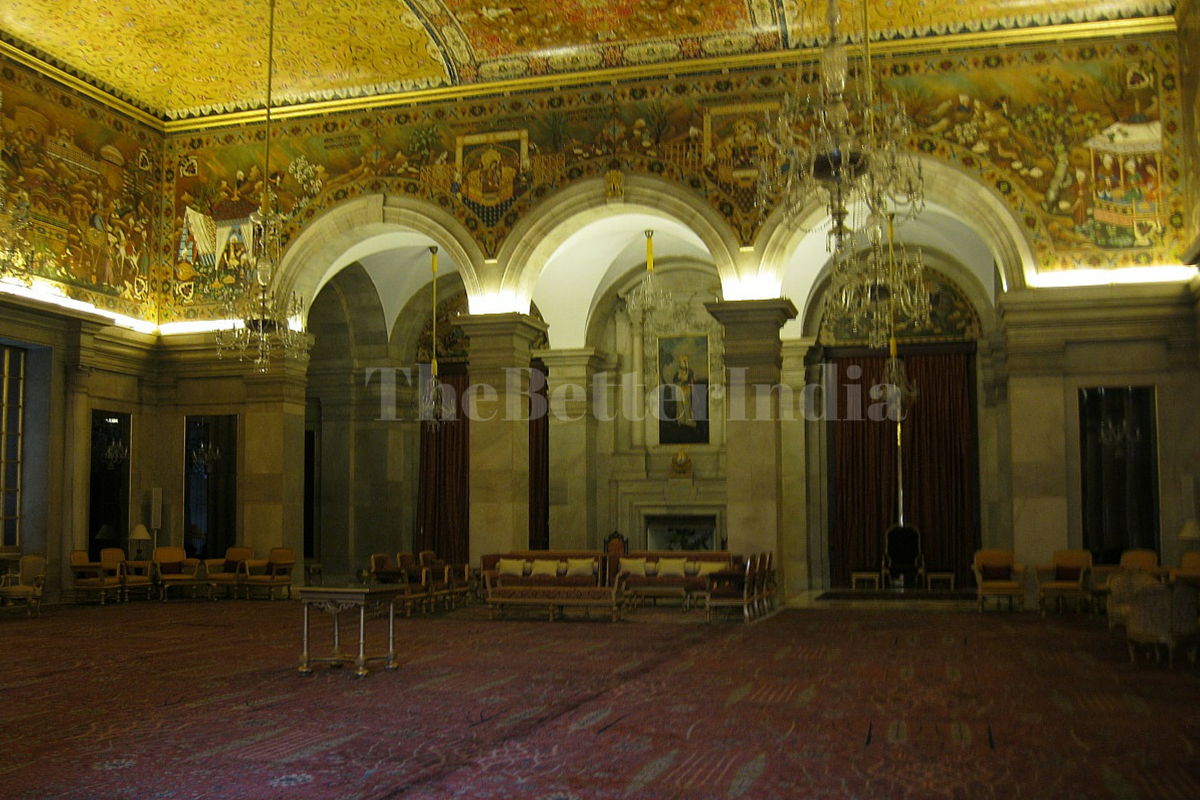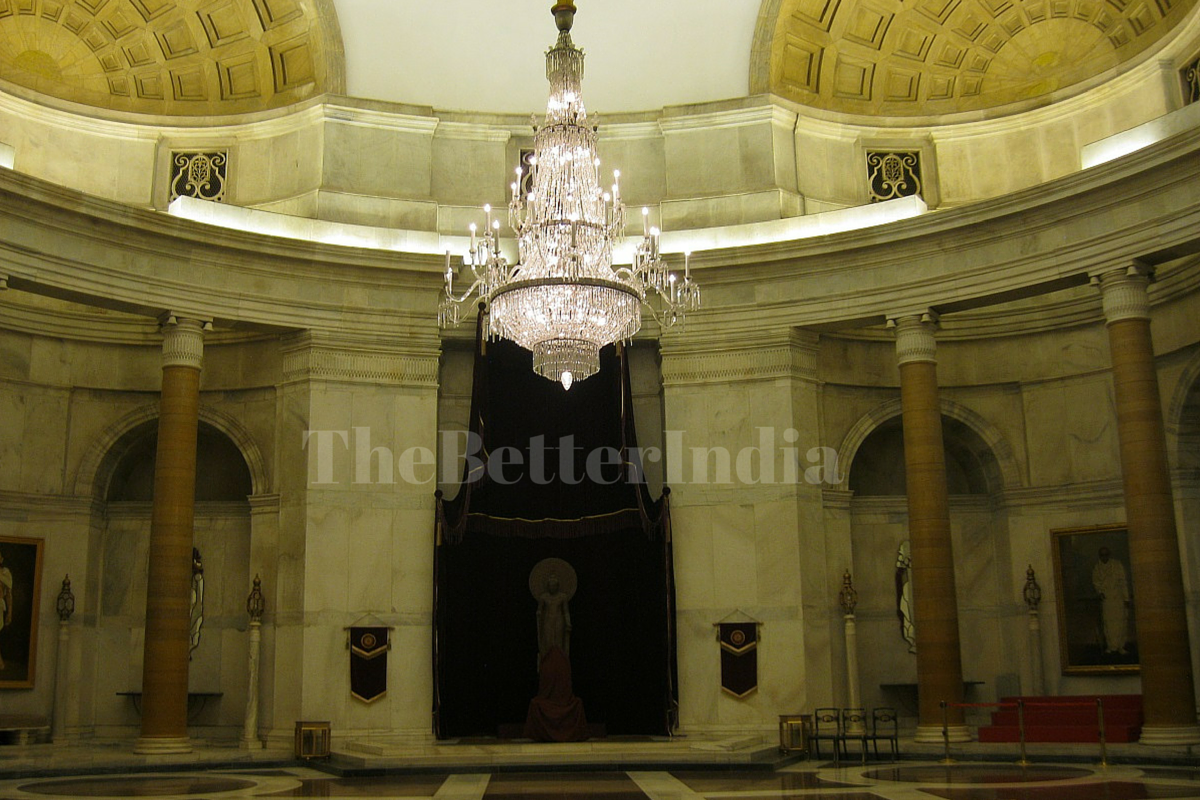TBI Exclusive: Inside the President’s House – a Photo Tour of Rashtrapati Bhavan
King George V announced the shift of the capital of British India from Calcutta to New Delhi in 1911. The architect of the new city was Sir Edwin Lutyens, who designed many buildings in Delhi, including the new Viceroy’s House. After independence, this palatial home was designated the residence of the President of India and renamed Rashtrapati Bhavan. Take a grand tour of the President’s Office with us.

King George V announced the shift of the capital of British India from Calcutta to New Delhi in 1911. The architect of the new city was Sir Edwin Lutyens, who designed many buildings in Delhi, including the new Viceroy’s House. After independence, this palatial home was designated the residence of the President of India and renamed Rashtrapati Bhavan.
In 1911, during the Delhi Durbar, King George V announced that the capital of India would be shifted from Calcutta to Delhi. The construction of the new city, with an enormous residence for the Viceroy, began the very next year.
A British architect named Sir Edwin Landseer Lutyens (often referred to as the ‘greatest British architect’) designed and built the section of New Delhi that is today known as Lutyens’ Delhi.
Sir Lutyens is famous for his imaginative designs, in which he adapted traditional Indian and Mughal architectural styles to make some of the most impressive buildings in Delhi.

Lutyens developed his own style of classical architecture, which later became known as the Delhi Order. He used this style for many buildings back home in London too. With the support and help of Sir Herbert Baker, Lutyens built many important buildings and monuments in New Delhi. The credit for the building of India Gate; Parliament House; many other government buildings in the area like Hyderabad House, Baroda House, Bikaner House, and Patiala House; and of course the sprawling palace on Raisina Hill, Rashtrapati Bhavan, goes to both of them.
“Rashtrapati Bhavan is an extremely spacious, sprawling four storied building, built on a floor area of 200,000 square feet, with 340 rooms in all”, says Ms Rosy Gupta, the senior-most guide at the President’s residence.
Visitors’ entry into the Rashtrapati Bhavan premises is usually from Gate no. 2 or Gate no. 37. After parking one’s vehicle, the visitor usually walks across the forecourt and approaches the base of the steps that lead to the main entrance of the building. Though this is closed at most times, one can look up the enormous flight of steps and see the sculptured statue of a bull, which is a replica of what one would see on the top of columns made during the Mauryan period.
A walk across the forecourt gets one to the Jaipur Column, which was gifted by Sir Sewai Madho Singh Maharaj of Jaipur to the British Crown.
Right on top of the Jaipur Column is an egg-shaped structure, surmounted by a bronze lotus and a six-pointed glass star, which is known as the ‘Star of India’.
“From here one enters the building and after the security check, the tour usually begins at the Marble Hall, which is a large room where painted portraits and sculptures of various Kings, Queens, Viceroys, Governor Generals and other important personalities, are displayed. There are two large globes here, which are around 200 years old. One of them shows the positions of the different star constellations that we see in the night sky”, adds Ms Gupta.
Below the Marble Hall is the one-of-its-kind Kitchen Museum.

Here, one can see various kitchen utensils and gadgets that were used in the Viceregal kitchens as well in the kitchens of the various Presidents of India.
There are doorways here that connect to the basement of the building, which are now blocked.
In British times, soldiers would enter the building from the basement and come up the steps into the Marble Hall.

From here one is taken up the open staircase, where on one side is a statue of Mahatma Gandhi and on the other side is the bust of Sir Lutyens.

One of the doors here leads to the large Banquet Hall where the President holds dinners for visiting dignitaries. The tables can seat a maximum of 104 people at a time. This hall has portraits of all the Presidents of India.
Another doorway from the open staircase leads to what was once the State Ball Room and is now known as Ashoka Hall.

The painting in the centre of the ceiling of this room was a gift from the King of Persia, Fateh Ali Shah. It is an equestrian portrait of the Shah himself, thrusting a spear into a tiger during a hunting trip. An Italian painter, Colonnello, took inspiration from this painting and extended the forest theme onto four more hunting scenes. There were twelve Indian painters who helped Colonnello complete the paintings, using oil paint directly on the walls and ceiling.
After a peek into the North Drawing room and the Long Drawing Room, one moves towards the Durbar Hall. En route, there are glass cupboards displaying some rare books from the President’s Library.
The Durbar Hall is the next stop for visitors. This hall is right below the central copper dome, the high point of the building.

This Buddhist architectural incorporation into the design of the building is actually an upturned double-shelled circular drum, which has copper plating on the outside. The large dome is supposed to be twice the height of the rest of the building.
“This hall was known as the Throne Room, as the thrones of the Viceroy and the Vicereine were placed in this room. The Viceroy’s throne was placed on a small pedestal in this vast room and the height of the pedestal, from ground level, is just above that of the topmost part of India Gate,” continues Ms Gupta. Apparently, this gave the British a feeling of superiority over India!
The President’s throne is placed here now, in front of the ancient statue of Lord Buddha. The main entrance to the building is right across from the throne.
From here, visitors are led down the marble staircase and taken along the South Court to the Mughal Gardens.

The South Court serves as a disembarking place for ministers who arrive at the palace to visit the President. The Snake Fountains are a striking feature of this part of the building.
The Mughal Gardens are built on three levels, with many fountains and gazebos enhancing their beauty. It is on these lawns that the President hosts the ‘At Home’ on Republic Day and Independence Day.
Many varieties of flowering plants and trees are seen in this garden. When the winter flowers are in full bloom in February/March every year, the garden is open right through the months for visitors to enjoy.
The last stop on the visit to the Bhavan is the Children’s Gallery. This little room houses gifts that the various Presidents have received from children. It also houses various instruments and gadgets that would interest children, like musical instruments, optical illusion devices, and even a model newspaper for 2020.
Some parts of Rashtrapati Bhavan are open to visitors on Fridays, Saturdays and Sundays on payment of a nominal price. One can get permission to visit by applying on the user friendly official website of Rashtrapati Bhavan here.
Like this story? Or have something to share? Write to us: [email protected], or connect with us on Facebook and Twitter (@thebetterindia).
If you found our stories insightful, informative, or even just enjoyable, we invite you to consider making a voluntary payment to support the work we do at The Better India. Your contribution helps us continue producing quality content that educates, inspires, and drives positive change.
Choose one of the payment options below for your contribution-
By paying for the stories you value, you directly contribute to sustaining our efforts focused on making a difference in the world. Together, let’s ensure that impactful stories continue to be told and shared, enriching lives and communities alike.
Thank you for your support. Here are some frequently asked questions you might find helpful to know why you are contributing?


This story made me
-
97
-
121
-
89
-
167














